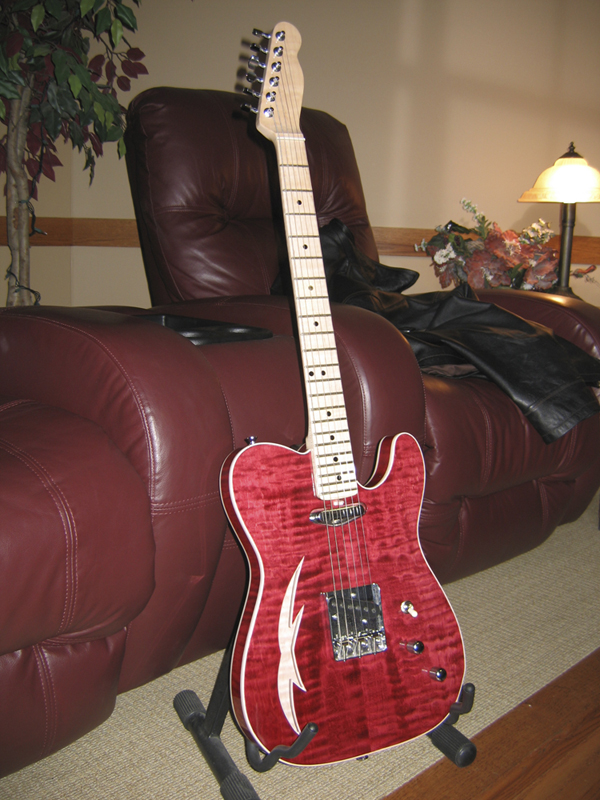Zlurgh wrote: I was under the impression that a chambered guitar was a fully sealed body as opposed to a semi-hollow body, which has f-holes...or some other opening. Was I wrong?
Yes and no.
Basically, I don't think there's anything approaching concensus on these issues. Traditionally, Gibson's ES series guitars where known as semi-hollows; they're bent sides, F-holes and all. Odd one out is Lucille (BB's signature) which is bascially an ES but without the f-holes. Thinline teles have f-holes, and you don't see those referred to as semihollows in general.
'Chambered' in industry-speak has generally been used to describe weight chambering (like Gibson does on some models), but in guitarmaking circles, chambered and semi-hollow tend to get used more or less interchangably.
Personally, I say I build chambered guitars when referring to my routed chamber electrics. Almost none of them have sound holes. F-holes in a chambered electric (with large chambers) mean a more lively guitar, but also mean higher risk of feedback. Even the electric archtoppy type things I refer to as chambered, F hole or not, although I'll tend to just say 'electric archtop'. I'd call a bent sides thing I build a semi-acoustic, because it tells you a little more about the construction. Semi-hollow just strikes me as a longwinded way of saying 'chambered'.
Mattia
|







 !
!